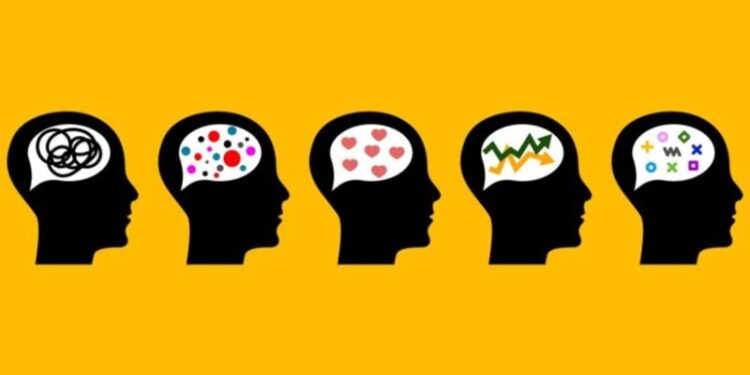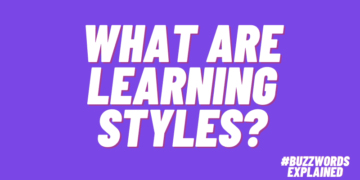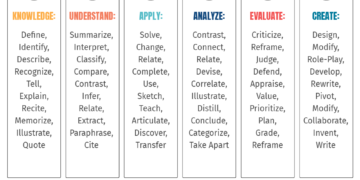eLearning May Be The Key To This Lens Of DEIB
By deploying eLearning, organizations can reach their entire employee population regardless of geographical location or time zone. In addition, it may be one of the great equalizers when it comes to addressing neurodiversity, an emerging aspect of diversity, equity, inclusion, and belonging (DEIB). As a result of the COVID-19 pandemic, many organizations have rethought how they deliver learning, putting virtual learning and eLearning on the fast track. Education-related organizations and corporate entities have been able to achieve full remote operation in just over a year, regardless of their domain expertise. Internet service has become available at lightning speeds across a wide area, whether in rural or urban settings. In the past, learners were confined to a classroom with an unvarying method of teaching. The development of remote learning has also facilitated the ability to learn in various ways.
Neurodiverse Learners
So, what has this change meant for individuals with a range of distinct learning needs that a physical classroom may not be able to meet? These individuals are referred to as neurodiverse learners. Neurodivergent individuals possess a number of distinctive cognitive, behavioral, and social characteristics. These individuals may experience some difficulties with concentration, memory, organization, perception, and even sequences or patterns, in standard classroom settings. Even though these distinctions were once considered disabilities, handicaps, or disorders, they took the form of many different diagnoses, such as dyslexia, sensory integration disorder, attention deficit disorder, auditory processing disorder, autism, and even giftedness. Neurodiversity is a state of recognition of differences in neurological functioning among individuals.
Progressive learning organizations know that differences should be emphasized and embraced. Learning is not a “one-size-fits-all” technique as revealed by these differentiations, and so it should not be restricted in the options that it provides its students. There is no universal way to think, and therefore everyone need not be taught the same way. As a result, even the labels that once stigmatized this generation are no longer of concern, nor do they signify a disability. As a result, they have been replaced with the term “neurodiversity,” or the idea that being different in itself is now acceptable. Rather, neurodiversity is regarded as the new norm. Differentiation is accepted by society. This is a phenomenon that is here to stay.
Key To Lifelong Learning
The ability to recognize, appreciate, and promote neurodiversity is the ultimate key to lifelong learning in organizations. Successful careers are contingent upon the learner being successful and engaged in their career and continued learning, and one-size-fits-all learning will not ensure the success of neurodivergent individuals. So, what’s missing? More neurodiverse learners are bypassing the physical classroom for a seat in a virtual classroom or asynchronous eLearning programs of their choosing, thus there is a compelling need for inclusive programs tailored to their needs.
Most organizations do offer an array of classroom-based programs, but why settle for a live instructor approach? These programs are conducted at the convenience of someone else. Instead, organizations have leaned into providing a hybrid approach to learning. A hybrid approach combines in-person and virtual learning in an attempt to deliver a multimodal experience for the learner. Studies have found that when at least one of the learner’s preferred modes of learning is included in the delivery of learning, they tend to view the overall experience positively. The best option for today’s neurodiverse learners is to fully automate their learning process. There is a wide array of benefits offered via this route. In eLearning, the learner is the one who controls his or her own learning. With control, learners have the ability to determine what to learn, and when, how, and why they wish to learn it. This eliminates the problem of being surrounded by those who may not share similar or even dissimilar interests.
In order for these like-minded individuals to be successful, they must possess job skills prior to graduation. It is vital that specific guidance and reinforcement are provided to them in order to enable them to understand their place in the job market and enable them to make the transition from studying to having a career. A diverse array of programs are imperative in order to engage them. Long-term success can only be achieved when these online learners are fully engaged. Those who have the advantage of such diversity, equity, inclusion, and belonging (DEIB) programs gain a leg up when it comes to being engaged and included in their area of expertise. These programs serve as a guide to encourage optimism about their future success. In the long run, this leads to higher retention rates, and neurodiverse learners will better understand what they need to do and how they are expected to perform.
After they have finished their higher education, it is time to transition into the workforce. A neurodiverse individual frequently possesses exceptional skills, including problem-solving abilities, complex mathematics, and pattern recognition. However, they have trouble keeping up with employer expectations. For four out of our five neurodiverse employees, continuing their careers beyond the first year has been difficult. To combat this, some employers are reorganizing their HR processes to boost recognition of neurodiversity in order to increase employee engagement. Corporate entities that have already taken steps to boost their employee-focused programs have seen exponential growth in productivity, higher employee engagement, and a higher retention rate compared to their counterparts that haven’t taken these steps.
Adapting The Workplace To Neurodiverse Learners Needs
In order to adapt the workplace to the needs of neurodiversity, companies must study how to make these newcomers successful. As positivity is promoted within an organization, the morale of all employees is enhanced, and productivity levels are higher both for individual employees (regardless of department) and for the corporation as a whole. Diversity, equity, and inclusion initiatives are critical to the success of corporations in and across all industries, regardless of the nature of the product, process, or technology the company offers to the public or private sector.
A focus on well-being and peak performance can offer insight into how successful programs that promote DEIB can unlock personal and professional potential through purpose and passion. A recent study outlines six strategies designed to foster workplace belonging:
- Acknowledge the feeling.
- Lead the charge.
- Pay it forward.
- Gain perspective.
- Be an ally.
- Promote allies.
Organizational impacts are driven by diversity and inclusion. There are tried-and-true processes that allow leaders to feel empowered, and in turn, set the tone for inclusion within the organization. Embracing neurodiversity is an integral part of any successful program. As a result of programs like these, the workforce has begun to accommodate neurodiversity respectfully. The development of DEIB training initiatives early on will enable corporations to gain a better understanding of the vast array of distinct types of the human mind. The incorporation of these elements will improve corporate success and is considered a wise business practice.
Diversity within a corporation increases a corporation’s chances of achieving superior revenue growth. It is more cost-effective to have a highly diverse leadership team than one lacking diversity among backgrounds and genders. In addition, employees in the organization strive to promote inclusion within a diverse environment. There is no question that diverse, inclusive workplaces are more attractive to people than uniform ones.
How To Promote Diversity, Equity, Inclusion, And Belonging
Adding diversity to the list of talents a candidate has is a way to break the mold. The world’s most prestigious brands are putting DEIB at the center of their organizations. In order to accomplish this, DEIB strategies and best practices are woven into the employee experience. Creating an environment where every employee feels included helps organizations structure accountability, a sense of purpose, and authenticity. Smaller organizations need to take the plunge too, in order to promote diversity, equity, and inclusion within their own corporation. In order to get this going within your own organization, here are a few tips to consider.
- Launch a mentorship program to promote diversity within the organization at all levels
All roles, including those in a leadership position, can find this useful. The likelihood of advancement within an organization increases when mentorship is present. - Utilize specific forms of inclusive language in order to create a culture where everyone feels included
Use general audience words such as everyone, co-workers, and even teammates, rather than labels based on gender or ethnicity. Before addressing someone, make sure you ask for their pronouns. It is imperative to avoid making assumptions about people. - Provide everyone with an equal opportunity to speak
Launch an outreach program to address the issue of diversity and what it means to the organization as a whole. The objective is to provide everyone with a clear understanding of what diversity means. - Make sure that the candidates you consider are qualified, as well as diverse, and able to contribute significantly to your team
Every individual deserves the same opportunity. Make sure that your talent team has a diversity branch that is specifically focused on dealing with these potential hires. A blind resume screening procedure can further facilitate the hiring of diverse candidates. - Recognize that your workforce is made up of individuals from a variety of backgrounds and religions
Pay attention to the upcoming holidays in celebration of diversity.
Last but not least, neurodiversity is indicative of the change which has erupted within eLearning. The recent changes to what is the new norm of today, tomorrow, and forever have made diversity and inclusion programs essential to promoting the success of neurodiverse individuals throughout higher education, as well as beyond. It’s time for a diverse change. How prepared is your organization?

WeLearn Learning Services
We are on a mission to build better humans through learning. We are your partner for beautiful, thoughtfully designed learning experiences that are modern, relevant, engaging, and impactful.




















